Top 10 largest countries in the world 2024
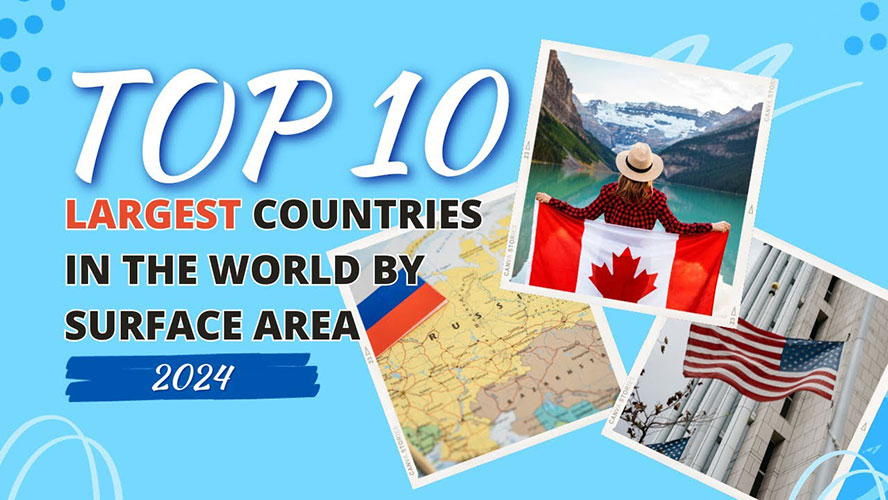
The map of the world stretches across a vast expanse of land, and each country has its own unique beauty. At the top of the planet is a magnificent display of endless beauty, and the top 10 countries represent some of the most vast and diverse geographies on the planet, with their cultures, natural landscapes, and economic systems having a profound impact on the globe. Let’s take a journey into this vast land and discover its magnificent beauty.
Note that this ranking is based on land area.
1st. Russia – 17,098,242km²
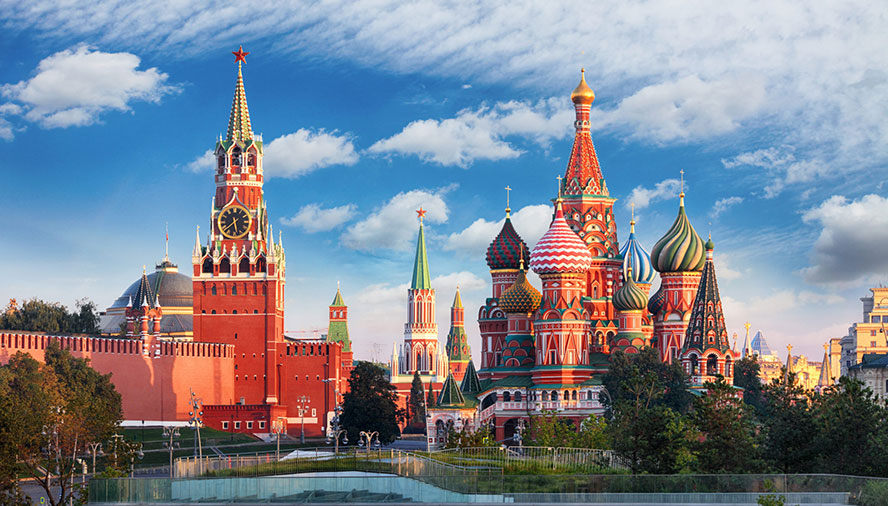
Russia, a huge country straddling the Eurasian continent, is known for its vast territory and unique geographical location. Much of its European territory consists of the Eastern European Plain, a vast expanse of land that is rich in history and culture. Russia’s eastern border borders the vast Pacific Ocean, while the west extends to the Gulf of Finland on the Baltic Sea. From east to west, Russia’s territory stretches for 9,000 kilometers, and the widest point in the north and south can be up to 4,000 kilometers, with a total area of about 17,098,200 square kilometers, occupying 76% of the former Soviet Union’s territory, making it the largest country in the world in terms of territory.
Russia has a large number of neighboring countries, bordering Norway and Finland in the northwest, Estonia, Latvia, Lithuania, Poland and Belarus in the west, Ukraine in the southwest, and Georgia, Azerbaijan and Kazakhstan in the south. And in the southeast, it borders China, Mongolia and North Korea. Meanwhile, to the east, Russia is bordered by Japan and the United States across the sea, demonstrating the vastness of Russia’s maritime power.
With a coastline of 33,807 kilometers, Russia is rich in marine resources. Most of its area is located in the north temperate zone, with a diverse and predominantly continental climate. In this vast land, there are large temperature differences, with the average temperature in January ranging from -1°C to -37°C, while the average temperature in July ranges from 11°C to 27°C. Annual precipitation averages 150-1000 millimeters, and such climatic conditions offer diverse possibilities for agricultural development in Russia.
In general, Russia, with its unique geographical location, vast territory and diverse climatic features, is an important country in the world that cannot be ignored. Both its rich natural resources and its deep historical and cultural heritage make Russia an indispensable member of the world stage.
2nd. Canada – 9,984,670km²
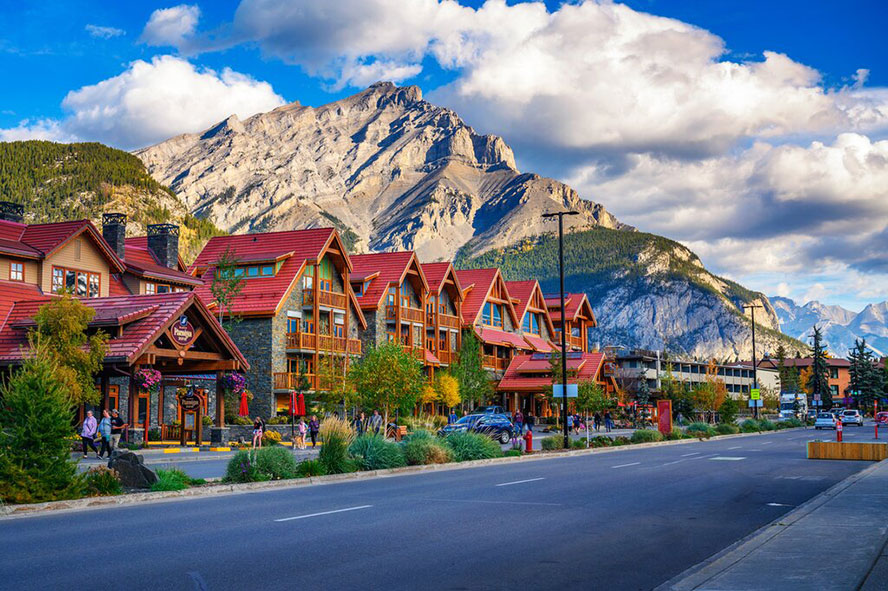
Canada, vast and expansive, has a total area of more than 9,980,000 square kilometers, the second largest in the world after Russia. Land occupies 9,093,570,000 square kilometers of this amazing land, while fresh water covers an area of 8,911,630,000 square kilometers. It is located in the northern part of North America, and almost the entire northern half of the country, with the exception of the Alaskan Peninsula and Greenland, is the territory of Canada. Bordered by the Atlantic Ocean to the east and the Pacific Ocean to the west, it is closely bounded by the vast lands of the United States in the south, and by the frigid Arctic Ocean in the north.
Canada borders the U.S. state of Alaska to the northwest and distant Greenland across Baffin Bay to the northeast. Its coastline is twisting and winding, with a length of about 240,000 kilometers, like a string of sparkling pearls set in the northern part of North America. The east is a rolling hilly terrain, and the Great Lakes and St. Lawrence regions bordering the United States in the south are flat with numerous basins, as if the palette of nature has painted a magnificent landscape.
To the west, on the other hand, are the majestic Cordillera Mountains, the highest region in Canada, with many peaks towering over 4,000 meters above sea level. In the center are the vast plains, which are like a green carpet of the earth. In the north are the Arctic Archipelago, a hilly, low mountainous region that is a paradise for polar explorers.
Canada is also one of the countries with the largest number of lakes in the world, which are dotted with lakes, like pearls set in this land. Influenced by the westerly winds, most of Canada belongs to the continental temperate coniferous forest climate, with slightly lower temperatures in the east, moderate climate in the south, mild and humid climate in the west, and cold tundra climate in the north. The Arctic Archipelago is even more cold all year round, silver, like the Kingdom of Ice and Snow. In the Midwest, summer temperatures can be as high as 40 ℃ or more, while the north may be as low as -60 ℃, this extreme temperature difference makes Canada’s climate become colorful, full of infinite charm.
3rd. The USA – 9,833,517km²
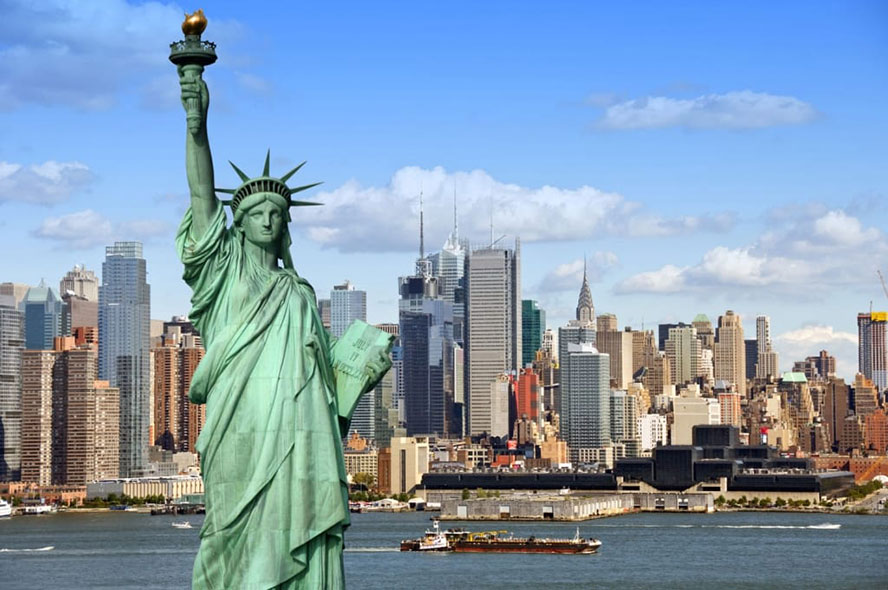
The United States, a vast land nestled in the middle of North America, has a territory that is not limited to the mainland, but also extends to Alaska in the northwestern part of North America and the Hawaiian Islands in the middle of the distant Pacific Ocean. The boundaries of this magnificent country are bordered by the glaciers and forests of Canada to the north, the warmth and prosperity of the Gulf of Mexico to the south, the vastness of the Pacific Ocean to the west, and the vastness and depth of the Atlantic Ocean to the east.
The United States covers an area of about 9,370,000 square kilometers, of which the land area occupies 9,158,960,000 square kilometers. From east to west, its mainland extends 4,500 kilometers, and from south to north it is 2,700 kilometers wide. Its coastline is even 22,680 kilometers long and winding, like a necklace inlaid with countless gems.
In this land, the climate is diverse. Most of the area has a continental climate, with cold winters, hot summers and short springs and autumns. However, the southern part of the country has a subtropical climate with warm seasons and abundant rainfall. It is worth mentioning that the plains of the north-central United States have great temperature differences. For example, the average temperature in Chicago in January is -3 ℃, while in July it climbs to 24 ℃. In the Gulf Coast, the average temperature in January is as high as 11 ℃, July is reached 28 ℃. This unique climate distribution, so that the United States presents a rich and colorful natural scenery and human landscape.
4th. China – 9,596,960km²
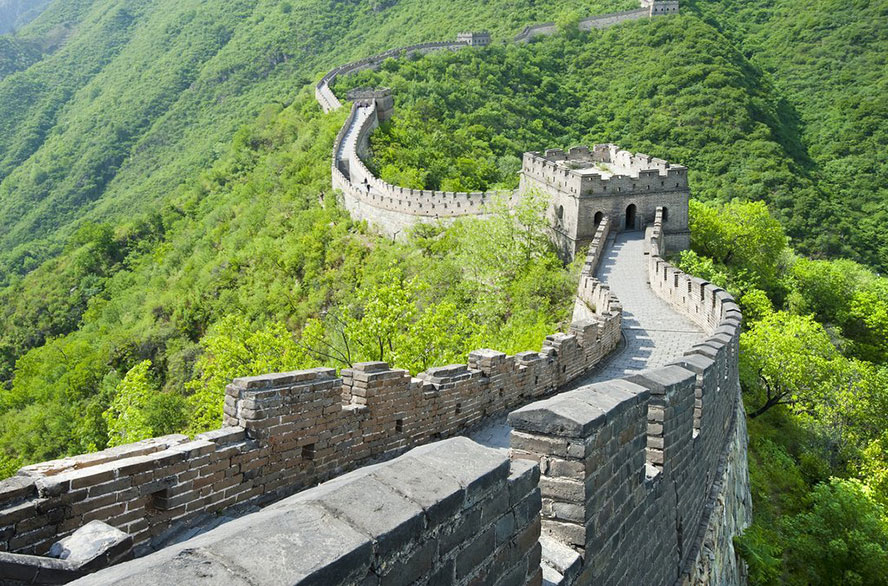
China, the jewel of Eastern civilization, is situated in the eastern part of the Asian continent, on the west coast of the Pacific Ocean. Her land area is like a vast and boundless scroll, some 9.6 million square kilometers, displaying the magnificence of nature and the depth of humanity. From the northernmost tip of the territory, the heart of the Heilongjiang River north of Mohe, to the southernmost tip of the Nansha Islands at the southern end of the Zengmu Dark Sand, she spans more than 49 degrees of latitude, as if a giant dragon snaking in the embrace of the earth. And her eastern end, from the confluence of the Heilongjiang and Ussuri Rivers to the Pamir Plateau at the western end, spans more than 60 degrees of longitude, highlighting her vast territory.
From the south to the north, from the east to the west, China is more than 5,000 kilometers away, as if it were nature’s ghostly workmanship that carved her into such magnificence. Her land border is 22,800 kilometers long, like a giant dragon winding, connecting the thousands of mountains and rivers in the country. And her mainland coastline, about 18,000 kilometers long, is like a string of pearls set in the edge of the ocean, witnessing the vastness and depth of the ocean.
In addition, China’s sea area is 4.73 million square kilometers, that is the endless blue treasure, full of mystery and unknown. Whether it is the blue South China Sea or the rough East China Sea, it carries the pride and hope of China’s oceans. On this vast land, China shows the world the style of a great country with her vastness, magnificence and richness.
5th. Brazil – 8,515,770km²
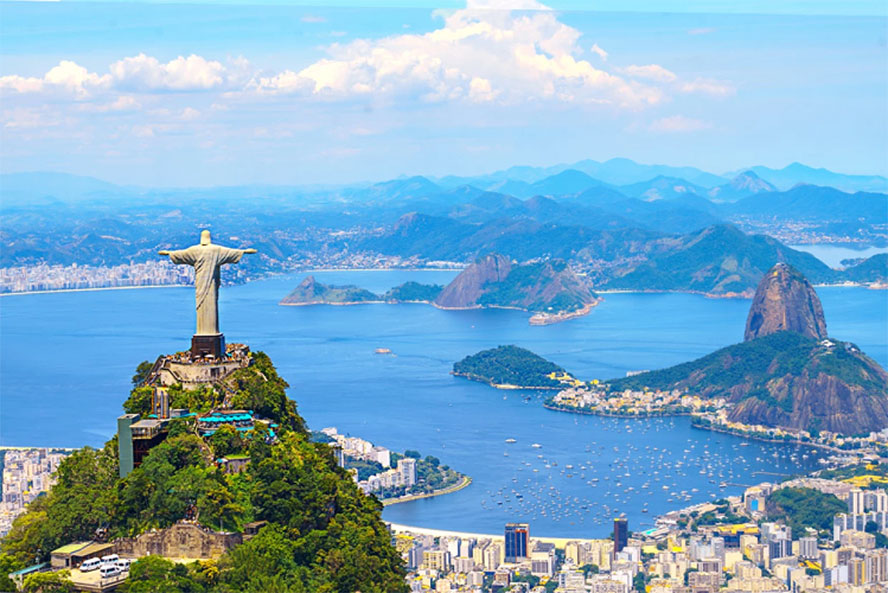
Brazil, the jewel of South America, is located in the southeastern part of the continent, and its vast territory is bordered by a number of countries, including French Guiana, Suriname, Guyana, Venezuela, and Colombia in the north, Peru and Bolivia in the west, Paraguay, Argentina, and Uruguay in the south, and directly embraces the vast waters of the Atlantic Ocean in the east. This land covers a staggering 8,510,300 square kilometers, making it the giant of Latin America and one of the five largest countries in the world in terms of land area.
Brazil has a long coastline of more than 7,400 kilometers, like a sparkling necklace set in the earth. Its territorial waters are 12 nautical miles wide, and beyond that, there is a broad exclusive economic zone that extends beyond 188 nautical miles. Eighty percent of this vast country is located in the tropics, which makes Brazil’s climate warm, humid and full of life.
If you go into the northern part of Brazil, you will feel the equatorial climate of the Amazonian plains, where the average annual temperature is maintained at 27-29°C, as if it were a never-ending summer. And when you come to the Central Plateau, you will feel the flavor of the savannah, where the climate is divided into dry and rainy seasons, as if a melody of nature was playing here. Going further south, you will be attracted by the average temperature of 16-19℃ in the southern region, where the climate is pleasant, as if it is the gentle embrace of nature.
6th. Australia – 7,741,220km²
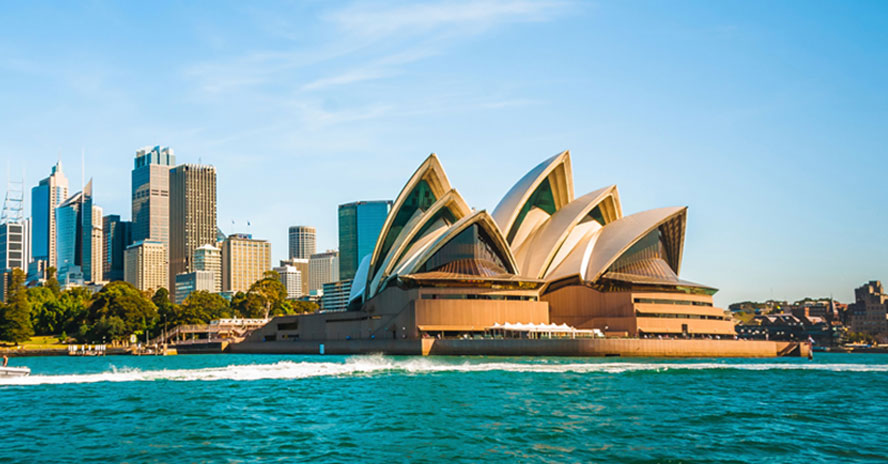
Australia, located between the South Pacific Ocean and the Indian Ocean, is known for its magnificent natural beauty and unique landscapes. It consists of the Australian mainland and Tasmania and other islands and overseas territories together, like a magnificent picture scroll.
With the Coral Sea and Tasman Sea in the Pacific Ocean to the east, and the Indian Ocean and its marginal seas to the west, north and south, the long coastline of about 36,700 kilometers is like a sparkling necklace around the neck of Australia. This vast land, with an area of 7,692,000 square kilometers, occupies the vast majority of Oceania. Despite being surrounded by water on all sides, amazingly, deserts and semi-deserts occupy 35% of the country’s area, adding a mysterious color to the land.
The country can be divided into three regions, the eastern mountains, the central plains and the western highlands, each with its own distinctive characteristics. Among them, the highest peak in the country, Mount Kosciuszko, is as high as 2,230 meters above sea level, which is majestic; while the longest river, the Melbourne River, meanders for 3,490 miles, which has witnessed the history and changes of this land. It is worth mentioning that Lake Eyre in the central part is the lowest point in Australia, with the surface of the lake being 12 meters below sea level, which is an amazing terrain that adds a touch of unique flavor to Australia.
On the eastern coast, there is one of the world’s largest coral reefs, the Great Barrier Reef, which is like a forest under the sea, colorful, attracting countless tourists to explore. Australia’s climate is diverse, with a tropical climate in the north and a temperate climate in most of the country. The average annual temperature is 27℃ in the north and 14℃ in the south. The outback is dry with less than 200 millimeters of rainfall per year, while the eastern mountains are relatively humid, with annual precipitation ranging from 500 to 1,200 millimeters, giving this land rich ecological diversity.
7th. India – 3,287,263km²
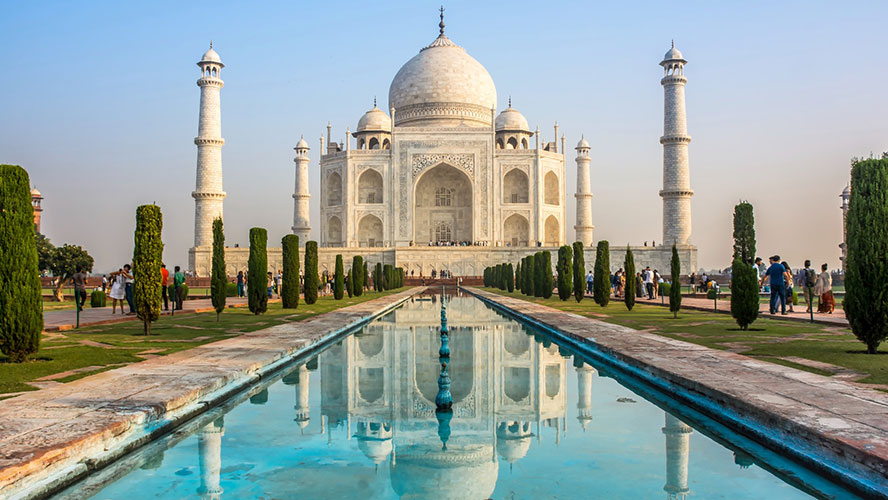
“India”, a word given the symbolism of the moon in Sanskrit, symbolizes mystery, tenderness and endless exploration. India still ranks seventh among the countries of the world in terms of area, an impressive position that reflects its importance and influence in the international arena.
India, an ancient and mysterious land, is not only rich in natural resources and diverse cultural heritage, but has also given birth to one of the oldest civilizations in the world. From the ancient Indus civilization to the modern country of today, India’s development has been full of twists and turns and changes. However, it is these historical deposits and accumulations that have made India a vibrant and promising country, attracting attention from all over the world.
8th. Argentina – 2,780,400km²8th.
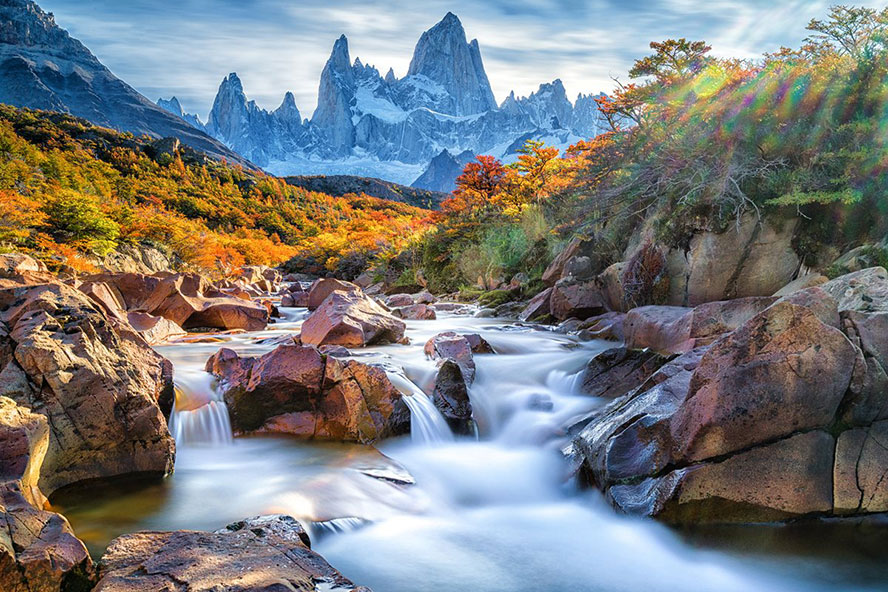
Argentina, a land full of mystery and charm located in the southeast of South America, is like a bright pearl set in the vast land. It covers an area of 2,780,400 square kilometers, second only to Brazil, is the second largest country in Latin America. Argentina’s geographical location is unique, with the Atlantic Ocean in the east, Antarctica in the south, Chile in the west, Bolivia and Paraguay in the north, and Uruguay and Brazil in the northeast.
In this land, there is a rich variety of topography, from the majestic Andes Mountains in the west, to the vast pampas grassland in the east, to the Gran Chaco Plain in the north and the Patagonia Plateau in the south, each of which exudes a unique charm. The Andes, the backbone of Argentina, are breathtaking in their splendor and rich biodiversity. The Pampas, as a famous agricultural and pastoral area, is an important economic pillar of Argentina.
In addition, Argentina’s climate is also diverse. The northern part of the country has a tropical climate, the center has a subtropical climate, and the south has a temperate climate. This diversity of climate provides Argentina with unique conditions for agriculture and animal husbandry.
The Humahuaca Canyon has played an important role in Argentina’s history. As a gateway to the ancient Inca culture, it bears witness to the deep connection between Argentina and the Inca civilization. Nowadays, Umahuaca Canyon has become a famous tourist attraction, attracting visitors from all over the world to explore the traces of the ancient civilization.
Argentina is not only blessed with magnificent natural beauty and a long history of culture, it is also a country rich in resources. Mineral resources such as oil, natural gas, coal, iron and silver are abundant in Argentina, providing a solid foundation for the country’s economic development. At the same time, Argentina is also one of the world’s important agricultural exporters, with its beef, wheat, corn and other agricultural products enjoying global fame.
Overall, Argentina is a country full of vigor and potential. Its natural beauty, history and culture, and rich resources are remarkable to the world. On the road of development in the future, Argentina will continue to give full play to its advantages and write an even more brilliant chapter.
9th. Kazakhstan – 2,724,900km²
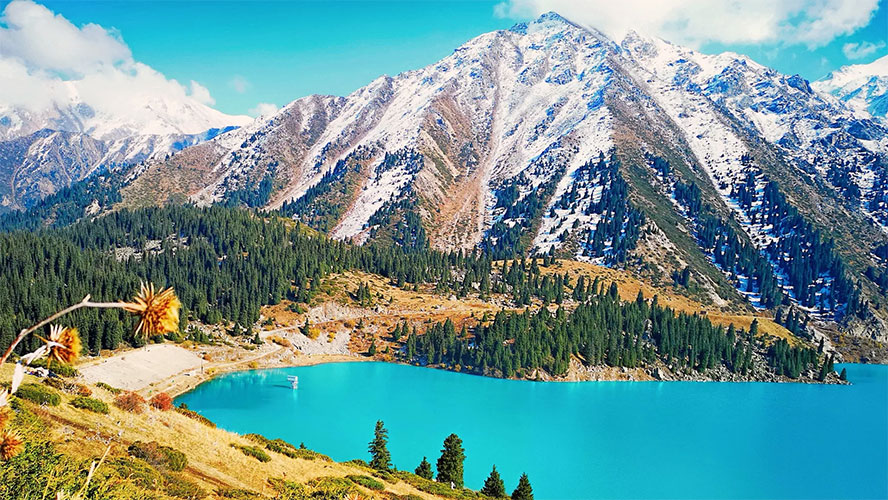
Kazakhstan, with a land area of 2,724,900 square kilometers, is the most expansive country in Central Asia. Located in the heart of Asia, it is surrounded by a number of countries, bordered by the vast territory of Russia to the north, the rich cultures of Uzbekistan, Turkmenistan and Kyrgyzstan to the south, the blue waters of the Caspian Sea to the west, and the ancient and prosperous country of China to the east. The Eurasian Continental Bridge, known as the “Silk Road of our time”, runs through Kazakhstan like a giant dragon, bearing witness to the changes in history and the fusion of cultures.
The terrain of Kazakhstan is diverse, ranging from vast plains and lowlands to majestic mountains and hills. The Karagoye Basin is the lowest point in the west, with an elevation of 132 meters below sea level, as if it were a depression in the earth. To the east and southeast, however, are the majestic Altai and Tian Shan mountains, which guard the land like a natural barrier. The plains, on the other hand, are mainly located in the west, north and southwest, providing the land with rich agricultural resources. In the central region are the undulating Kazakh hills, which, together with the plains and mountains, make up Kazakhstan’s unique landscape.
Despite its vastness, deserts and semi-deserts occupy 60% of Kazakhstan’s land area, making the land challenging and mysterious. However, it is in this environment that Kazakhstan has given birth to many magnificent rivers, lakes and glaciers. Rivers such as the Irtysh, Syr Darya, Ural, Emba and Ili meander through the country, bringing life and vitality to the land. There are also many lakes, about 48,000 of which the larger ones are the Caspian Sea, the Aral Sea, Lake Balkhash and Jaishangpo, etc. They are like jewels inlaid on this land, adding endless charm to Kazakhstan.
However, Kazakhstan’s climate is relatively harsh, with a severely arid continental climate. The summers are hot and dry, while the winters are cold and snowy, with average temperatures ranging from -19°C to -4°C in January, and from 19°C to 26°C in July. The absolute maximum and minimum temperatures can reach 45°C and -45°C respectively, while in the desert, the maximum temperature can even reach 70°C. The annual precipitation is also extremely uneven. Annual precipitation is also extremely uneven, with even less than 100 millimeters in the desert zone, compared to 300 to 400 millimeters in the north and up to 1,000 to 2,000 millimeters in the mountains. Such climatic conditions pose a challenge to Kazakhstan, but also add endless charm to its unique natural landscape and cultural features.
10th. Algeria – 2,381,740km²
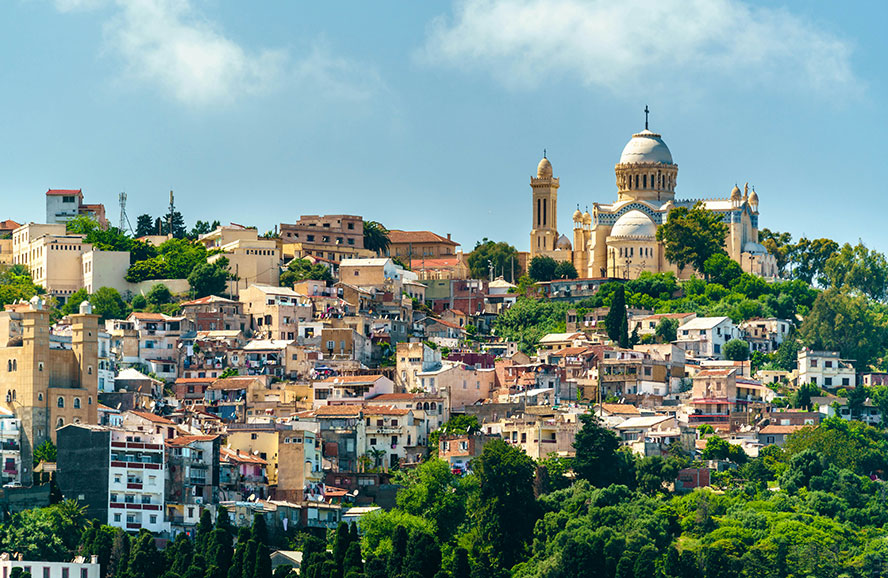
Algeria, a country in northwestern Africa, has a vast land area totaling 2.38 million square kilometers, making it one of the largest countries on the continent. It is bordered by the Mediterranean Sea to the north, Tunisia and Libya to the east, Niger, Mali and Mauritania to the south, and Morocco and Western Sahara to the west.
Algeria’s geography is varied, with a north-south line about 2,000 kilometers long and a maximum east-west width of about 1,800 kilometers, a vast area that makes for a rich and varied topography. From the Mediterranean coast in the north to the Sahara Desert in the south, and from the mountains in the east to the plains in the west, Algeria’s natural landscape is ever-changing and breathtaking.
Its coastline is about 1,200 kilometers long, and this winding stretch of coastline is dotted with beautiful beaches and port cities. These cities are not only important ports in Algeria, but also desirable destinations for tourists. Here, you can feel the romantic atmosphere of the Mediterranean Sea and enjoy the unique cultural flavor of Algeria.
Algeria’s geographical location and natural conditions make it a bright pearl on the African continent. Its rich resources and unique landscape attract tourists and investors from all over the world. As a multicultural country, Algeria is showing its unique charm and potential to the world.